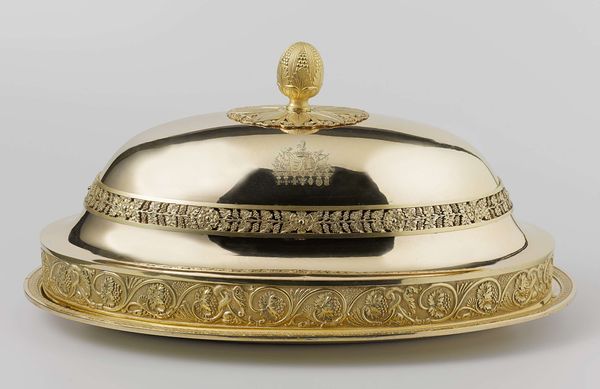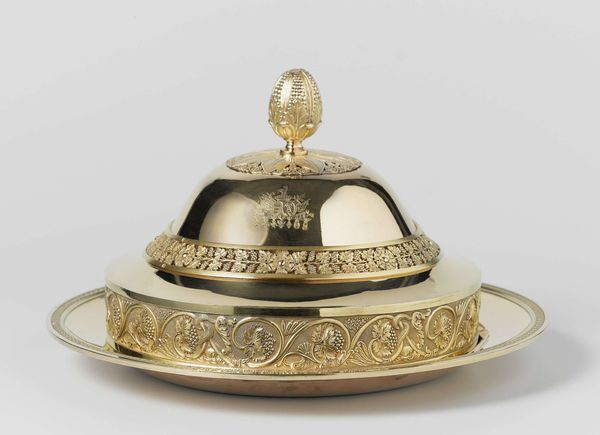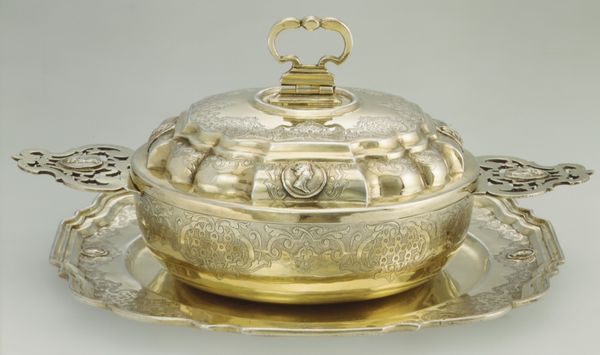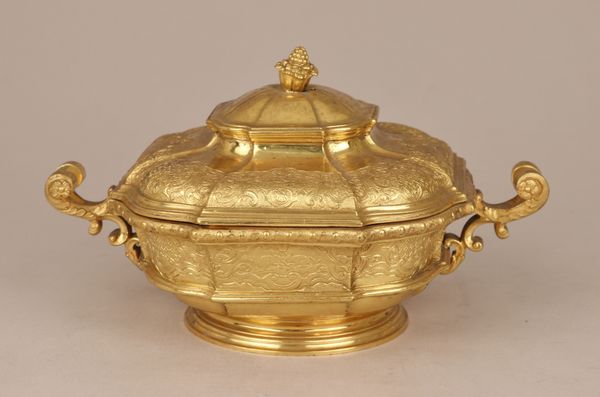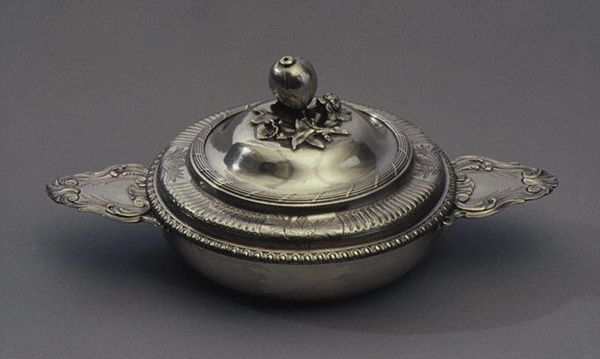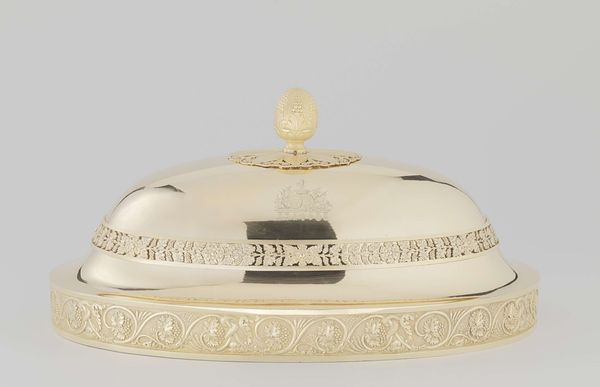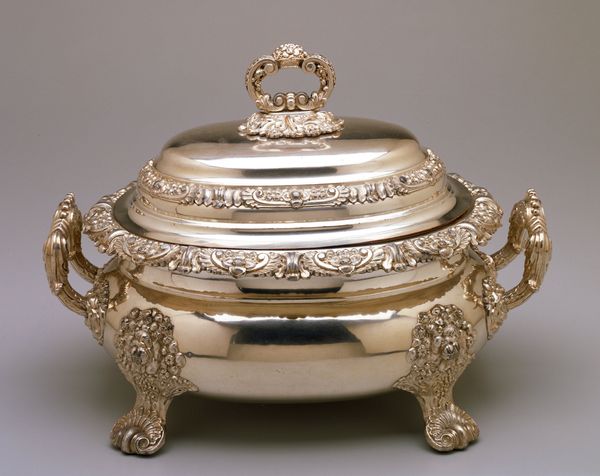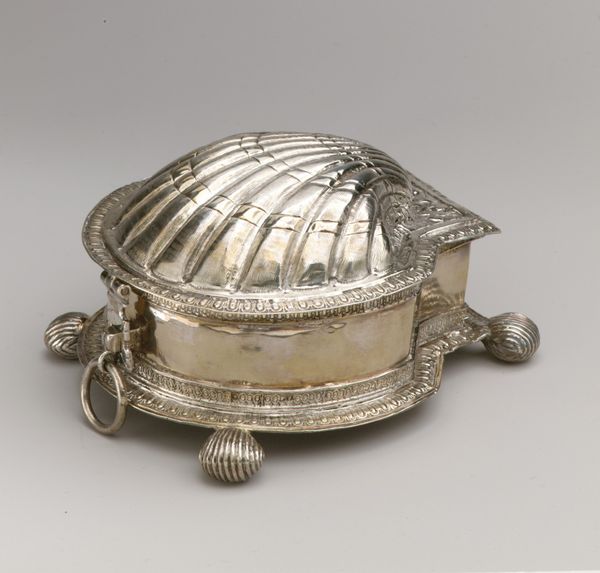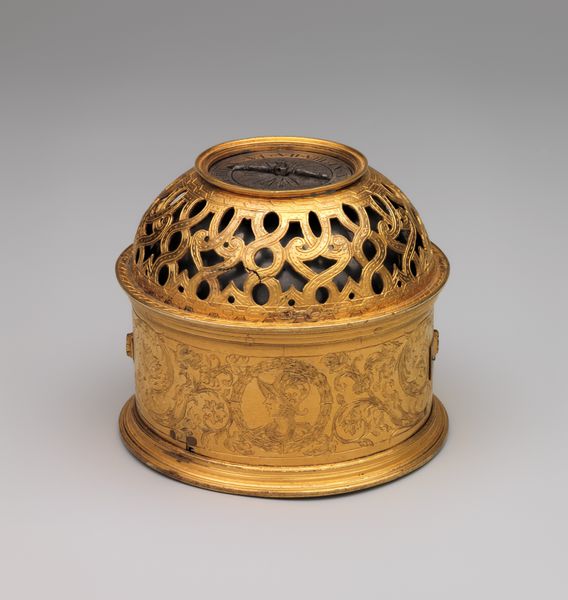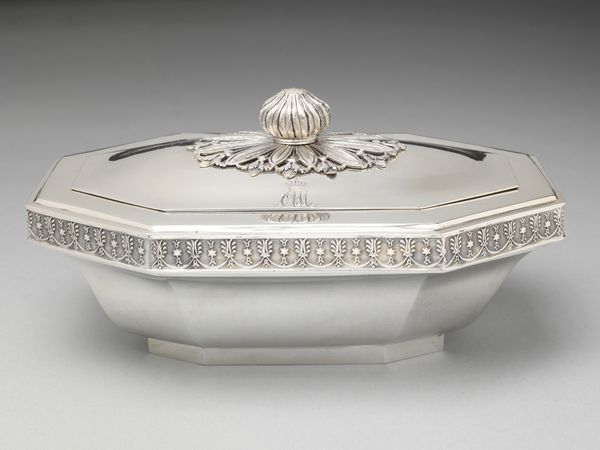
Cloches (dish covers), coolers, soup tureens, sauceboats, salt cellars, pepper and mustard pots 1819
0:00
0:00
Copyright: Rijks Museum: Open Domain
This gleaming silver tableware, by Jean-Baptiste-Claude Odiot, speaks volumes about the era it came from. Silver was the status symbol of its day, prized for its gleam, its permanence, and the skilled labor required to work it. Look closely, and you will see the meticulous detail on each piece. Embossing, engraving, chasing—these are just some of the techniques involved, each demanding hours of painstaking work. These techniques create elaborate decorations. The weight of the material gives a sense of importance and luxury, demonstrating wealth and social standing through design. The forms of the objects, while functional, also tell a story. They evoke classical forms, aligning their owner with the grandeur of past empires. In a world increasingly shaped by industrial production, pieces like these stood apart, embodying the values of craftsmanship and artistry. Recognizing the skill and labor that went into its making deepens our appreciation, moving beyond simple admiration to understanding its cultural significance.
Comments
rijksmuseum over 2 years ago
⋮
A confidante of the Russian empress commissioned this 140-piece service, several items of which are displayed here. Silversmith Odiot, the painter Prud’hon and the architect Cavelier proudly presented the new models at the 1819 French national exhibition of decorative art. Notable are the kneeling angels supporting the soup tureen, which are characteristic of the late Empire style.
Join the conversation
Join millions of artists and users on Artera today and experience the ultimate creative platform.
